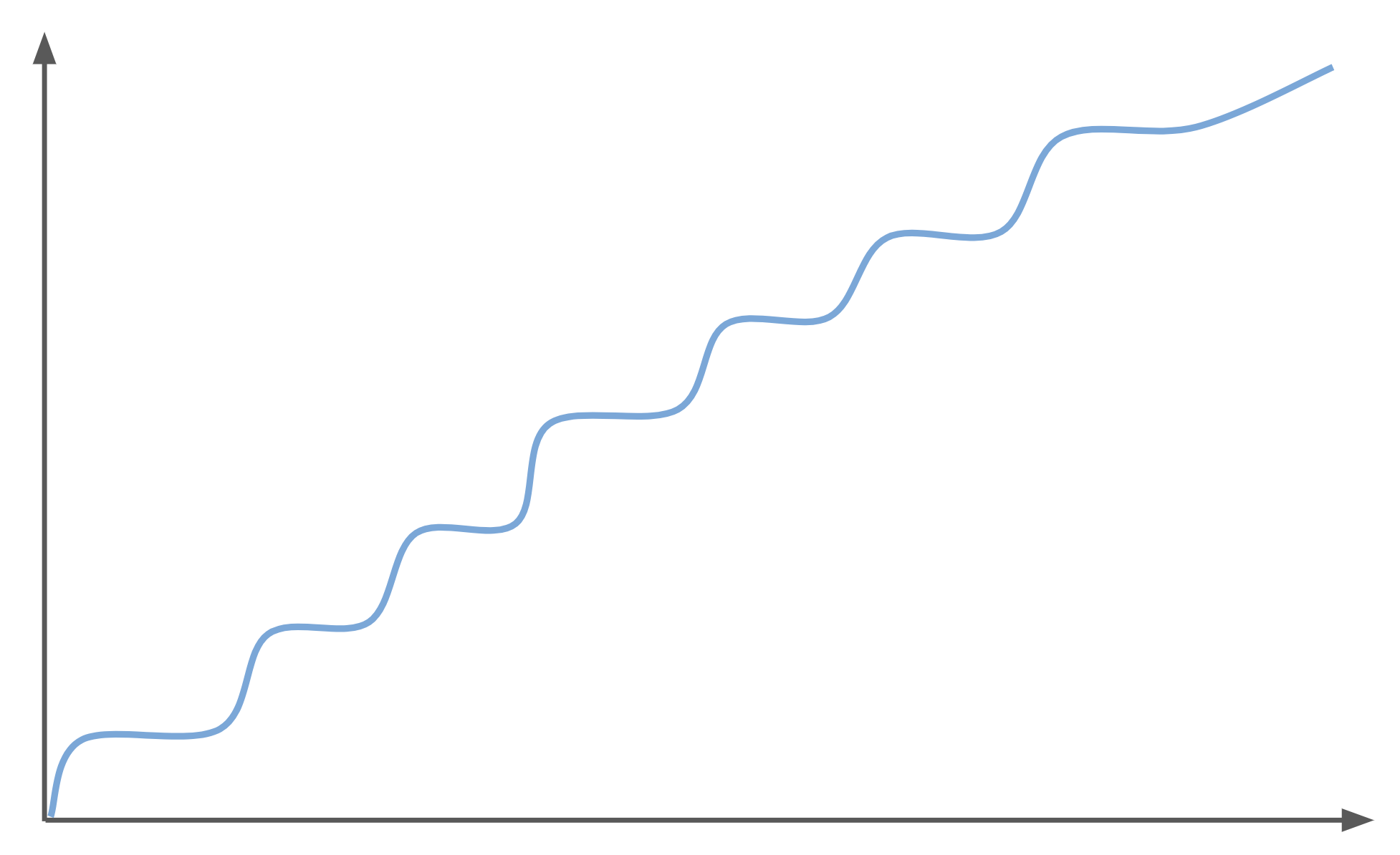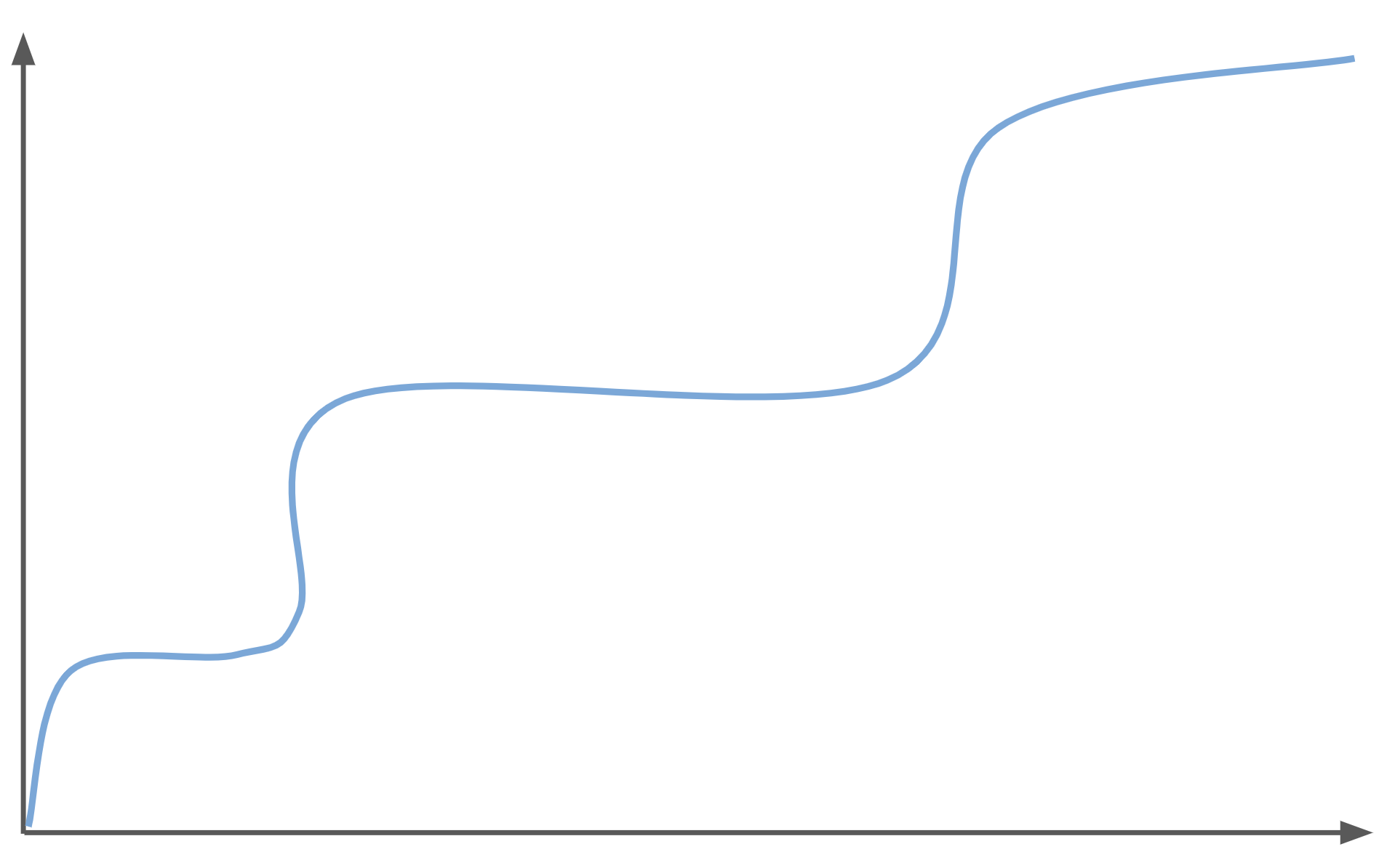I lived in Pittsburgh for the first 37 years of my life. It's still where my heart yearns to be, even though I've come to love my new city. I remember being a kid on a field trip, heading down to the shores of the Monongahela River, and riding up the Duquesne Incline.

Watching the city of Pittsburgh slowly come into view while you rise above it is both fascinating and wondrous.
This kind of journey - a straight, sharp trip from the bottom to the top - is perfect for transporting people and materials. However, for humans trying to learn something, the trip cannot happen like this. The human brain needs time for reflection and making mistakes. New neural pathways take time to be established.
Creating the Right Grade
Having the privilege of doing this job for these past years with this great team of instructors has allowed me to see patterns play out over long periods of time to determine the effectiveness of what we do. Not only do I get a feel of how I deliver the material, but also see 5 other ways it can be delivered by different personalities.
I love that because I can steal... sorry, I mean learn from great ideas that my teammates discover and integrate them into the experience that I deliver, and eventually bake into the course.
When I designed our most recent course, I was able to draw upon the rhythm of each instructor's delivery and attempt something that allowed each person's strengths to be maximized, and still deliver a great experience to the students.
Since one of the most common frustrations was that there wasn't enough hands-on time for students, I knew that the slope of the course was not correct. It certainly wasn't the destructive slope of an incline up the face of a mountain in Pittsburgh, but apparently it was still too steep.
Initial Step-Ladder Approach
Please excuse my poor chart-making skills, but this first one I call the Step-Ladder approach. The course was broken up into different steps, and the intent was to give students enough time between concepts to experiment and fail.
Unfortunately, that often did not happen. The cadence of the course had too many steps, and the instruction team hadn't changed to a flipped style yet, so there ended up being too little time for students to play.

Current Striking Snake Approach
For our 37th full-time cohort, I decided to take a risk and change the cadence of the course. Again, poor drawing skills, but I call this the Striking Snake approach, because that's kinda what it looks like.
I decided to clump together many concepts earlier in the course, instead of introducing them gradually. Then the students were given vast amounts of lab time, comparatively, to get their hands on the keyboard, and keep them there.
This allowed me to get to know them individually and do more fine-grained coaching while they worked at their own pace, and explored the course.

By keeping an open mind, and an open line of communication with the students at all times, it worked. There was a 2-week stretch that required significant support from the instruction staff to keep the spirits of the class up while they worked through some hard concepts, but once they made it through it, their level of understanding, their confidence, and their ability to apply and analyze the code they were writing was higher than I had ever seen in a previous cohort.
I was fortunate to have two exceptional Junior Instructors, Leah Hoefling and Mo Silvera, who were highly capable, and willing to deliver this new format without much preparation.
That 2-week stretch felt like I threw the students into a swimming pool filled with lava, teeming with sharks, and with laser guns pointed at them at all times. It was a tad too much. I wanted the course to be effortful, but it needed to be dialed back.
I made several modifications since to smooth things out a little better and removed a small amount of noise that I introduced. Now that I have delivered to it 2 more cohorts, I have the data and the feedback I needed to feel comfortable with the experience in its current state.